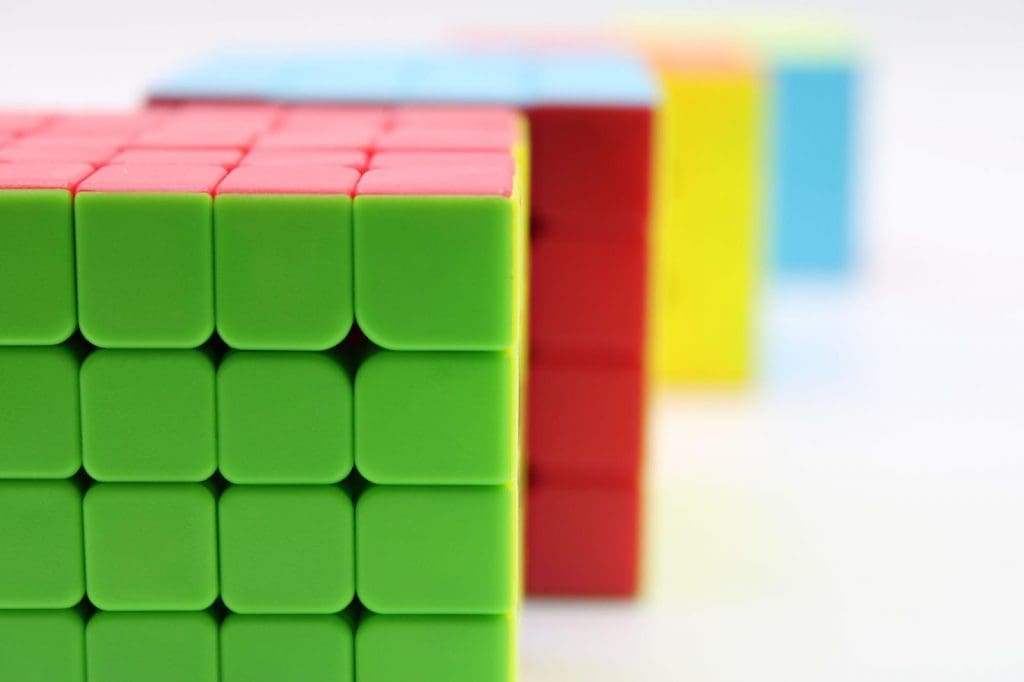
For nearly fifty years it’s been a mainstay of pop culture, having kept fingers agile and brains frustrated with its simple yet challenging application. That’s right, the Rubik’s Cube remains one of the most enduring and popular toys ever invented since its debut in the early 1970s. Read on to learn more about one of the greatest puzzles of our time.
When he invented the Rubik’s Cube, Hungarian Erno Rubik was an architecture professor. Rubik first designed this movable, twisting toy in the spring of 1974 using wood painted in the iconic colours that remain today: yellow, red, blue, white, orange, and green. He drilled holes in the wood and tried to join the pieces, but the shape would not stay together. Eventually, he created somewhat of a paradoxical puzzle that moved, but also retained its solid shape. Rubik called the toy the ‘Magic Cube’, or ‘Buvös Kocka’ in his native Hungarian language.
Patenting the design in 1975, the ‘Magic Cube’ grew in popularity during the late 1970s. However, during this time, imports and exports were strictly mandated, so the answer to distributing this toy came in the form of International Toy Fairs.

Between 1979 and 1980, toy specialist Tom Kremer believed in a vision for the global distribution of the cube and signed a worldwide distribution license. The only caveat? A name change. In 1980, the newly named Rubik’s Cube was launched—with a weight loss, as the cube was manufactured to weigh half its original weight (much easier for speedcubing!). Across the decades, the Rubik’s Cube has featured in advertisements, TV shows, films, music videos, books, and exhibitions. In 1983, a spin-off block game called The Snake was released; in 1987 another spin-off, called Magic, followed.
Like it says on the tin, a Rubik’s Cube is a cube-shaped puzzle toy. Split up into 54 smaller, coloured cubes—nine of each colour—the aim of the game is to get all the same coloured cubes onto the same side. The 5.6cm cube is made up of 26 smaller cubes, or cubelets, that are interlocked around a centre static cube. Although the cube can easily be taken apart, the aim is to solve it without removing any of the pieces, and just by moving them in a specific order.

There are over 43 quintillion ways (that’s 18 zeroes!) to arrange the coloured squares on a Rubik’s Cube, but only one of those combinations is correct. When Erno Rubik first invented the cube, it took him a month to solve it. Since then, his fastest time is about a minute, a long way off from the speedcubers that were born from this colourful toy.
To bring together speedcubers from across the world, The World Cube Association was formed. Over the past decade, over 100,000 people have competed in speedcubing competitions held by the association across a wide range of countries, including Australia, Jordan, New Zealand, El Salvador, the US, and Sweden. As the name suggests, speedcubing involves solving the cube in the fastest time possible.
As of 2022, Yusheng Du of China holds the world record for speedcubing, solving the cube in 3.47 seconds (and beating the previous record holder by 0.75 seconds). For non-humans, however, a robot solved the Rubik’s Cube in an almost unbelievable 0.38 seconds! If we’re talking non-traditional, Australian Feliks Zemdegs holds the record for the fastest solving of the cube one-handed (6.88 seconds), and Jakub Kipa from Poland reversed the script by using his feet to solve the puzzle in 20.57 seconds.
Although we can’t solve a Rubik’s Cube in 3.47 seconds, we can do a Risk Assessment in under 30 seconds and help you with a myriad of other chemical related tasks. Contact us on sa***@*******ch.net if you need assistance in chemicals management, heat mapping, asset management, and more.
Sources: